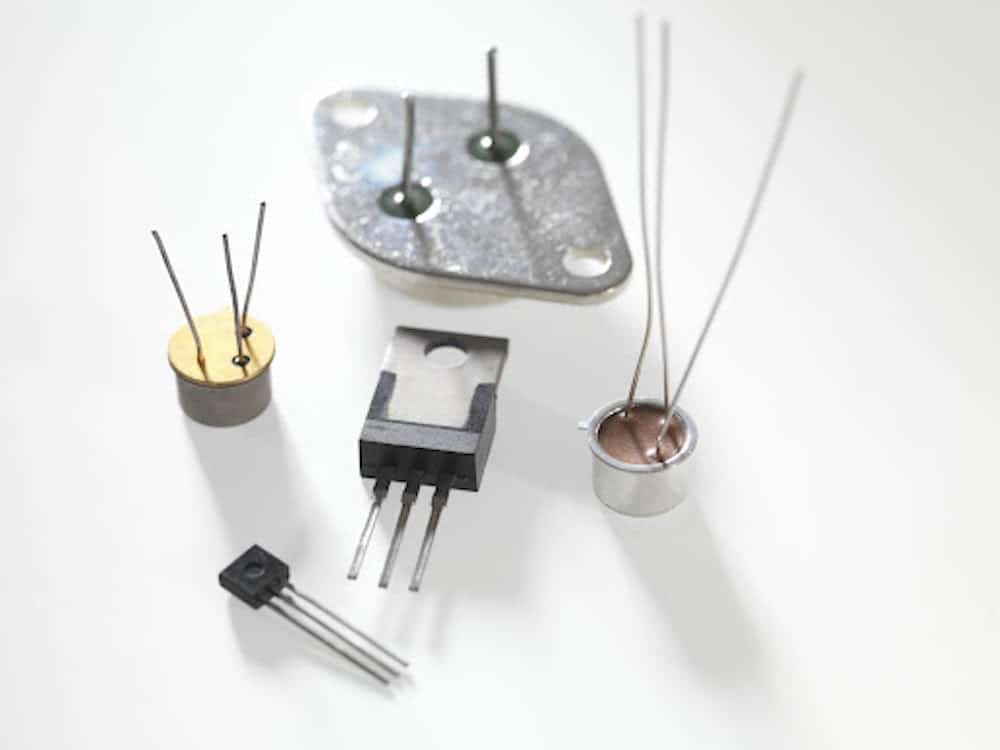Table of Contents
One of the components most often seen in electrical circuits is the transistor. They are well-liked by electrical designers because of their simplicity and ease of usage. Switching and amplification are their two major tasks. To include this three-legged apparatus in your next project and have it work properly, you just need to do a few calculations. So let’s take a closer look at transistors and see how you may employ one in a future electrical project. You will have a thorough grasp of the internal structure of transistors, its many kinds, and how to use them in electrical circuits after this blog article.
What exactly is the importance of transistors?
Almost every electrical circuit uses transistors. They are also found within many other electrical components, such as logic gates (AND, OR, NOT, XOR, etc.) and integrated circuits (IC). An IC typically has 42 million transistors, but the iPhone 11 has 8.5 billion.
What does the inside of a transistor look like?
A semiconductor material, such as silicon, germanium, and others, is used to make transistors. The creation of n-type and p-type areas in semiconductor wafers is made possible by the inclusion of impurities. This practice is known as doping.
A semiconductor wafer, such as silicon, may be divided into two zones called n-type and p-type thanks to doping. What are these areas, and how do they vary from one another? They may be distinguished based on how many positive and negative charges are present in that area. Because the lack of an electron leaves a “hole,” negatively charged particles are referred to as electrons, while positively charged regions are referred to as holes. While most carriers in a p-type zone are holes, most carriers in an n-type region are electrons.
A p-type area is sandwiched between two n-type regions, and vice versa, to create a transistor. Based on their internal structures, transistors may be categorized as NPN or PNP. Each of a transistor’s three doped areas gives rise to one of the three terminals. The base terminal is in the center zone, while the emitter and collector terminals are in the other two.
Why Do Transistors Function?
Transistors may function as switches or amplifiers. A transistor amplifies a tiny input current to create a greater output current while acting as an amplifier. On the other hand, a low input current at the input terminal turns on and generates a higher output current, acting as a switch. Due to their benefits, both transistor designs are widely used in electronic circuit design.
A battery’s negative terminal will flow current from the base to the emitter if the positive terminal is connected to the base (p-type region) and the positive terminal to the n-type area (emitter). Similar to this, an emitter current will produce and flow towards the collector if the collector (n-type area) is at a greater positive potential than the base and emitter. The base voltage regulates the collector-emitter current or ICE.
By providing the proper base of electronic components, collector, and emitter voltages, the switching and amplification modes are accomplished. To further grasp how amplification and switching work, let’s take a look at some simple transistor circuits.
Configurations of transistors
In the design of electronic circuits, three primary transistor designs are often employed:
Typical Emitter
The common-emitter design functions as a switch and an amplifier. The base is where the input signal is applied, and the collector terminal is where the output signal is measured. Since the input signal is applied across the base-emitter terminals while the output is gathered across the collector and emitter terminals, the emitter is shared by the input and output terminals. The common-emitter amplifier circuit is shown in the diagram below. In these circuit examples, NPN transistors are taken into account.


